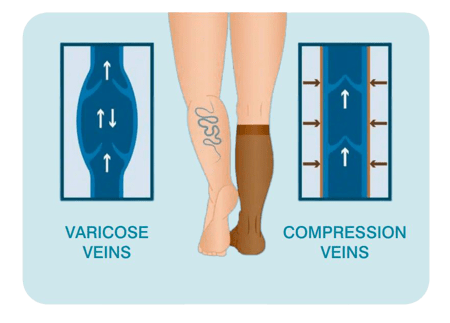Lower Extremity Amputation Prevention (LEAP)
What is PVD?
PLAQUE BUILDS UP ON THE INSIDE walls of the arteries that carry blood from the heart to the legs and feet.
THE ARTERIES HARDEN AND NARROW (a process called atherosclerosis) and blood flow to the legs and feet is significantly reduced.
THIS MAY ALSO INVOLVE HARDENED and narrowed arteries to the heart and brain, causing an increased risk of heart attack or stroke.

LEAP INTO ACTION: See Your Doctor.
If you do find out you have PVD, there are many things you and your doctor can do.
YOU CAN START WITH
LIFESTYLE CHANGES:
- quit smoking
- manage your diabetes
- eat a healthy diet
- get regular exercise
YOU MAY ALSO NEED
MEDICATION:
LOWER high cholesterol and/or high blood pressure
THIN your blood to prevent clots from forming
IMPROVE your walking ability and decrease pain in your legs
YOUR DOCTOR
MIGHT RECOMMEND:
ANGIOPLASTY - a minimally invasive procedure where a balloon is inflated inside a
blocked artery to restore blood flow
STENT – a tiny tube placed in the artery to keep it open
ATHERECTOMY – a minimally invasive procedure using a medical device to help
open blocked arteries
BYPASS SURGERY – a surgical procedure that uses a blood vessel or synthetic tube
to bypass blockages in the artery
Do You Have PVD?
ARE YOU AT RISK FOR PVD?
Answers to these questions will help your physician determine the need to be screened for PVD to better assess your vascular health.
Are you 50 years old or older?
Do you smoke or did you smoke?
Have you been diagnosed with any of the following:
Diabetes?
Chronic kidney disease?
High blood pressure?
High cholesterol?
Symptoms that may be signs you have PVD. Do you...
Experience tiredness, heaviness, or cramping in the leg muscles?
Have toes or feet that look pale, discolored or blue?
Experience leg or foot pain that disturbs your sleep?
Have sores or wounds on your toes, feet, or legs that heal slowly or not at all?
Have a leg or foot that feels colder than the other?
Have thick, yellow toenails that aren’t growing?
The more questions you answered YES, the greater your risk of PVD.
SO DON’T WAIT. DISCUSS YOUR SYMPTOMS WITH YOUR DOCTOR NOW.